In California there’s always a Full Throttle sunset waiting for me in the middle of the road. There are never Lucasarts toy bunnies waiting to disrupt my ride, no credits roll over the windscreen. But there’s that thick, clotted layer of Californian tarmac.
That wide, husky yawn of promise towards the Bay Bridge. The stamen-orange of the painted line leading the car bonnet over the horizon. The camber draws slowly over the ochre in the sky. The clouds go almost purple as the stars bloom. The car does not drive but sail. Humid California touches the fingers you place by the open window. The shadowed dashboard of the car falls into sudden, cartoon realness. The hum of the car’s engine tells you that you are going somewhere.
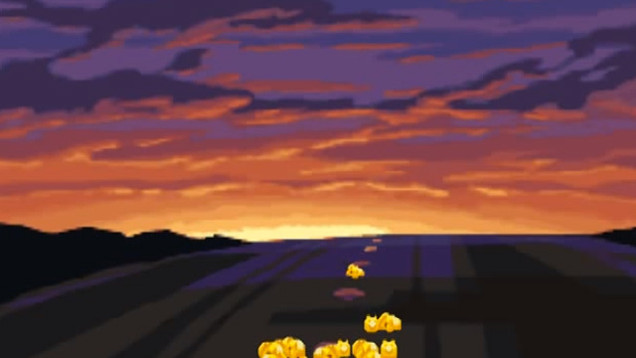
There’s nothing like an American road. They are the pulse of America; they are different from the roads of Europe where narrow paths through mountains and 2000 year old architecture struggle to be threaded, where the legacy of the Ancient Roman army still betrays a preference for feet. The strategy of the American road is different from the Ancient Roman foundations of Europe. The American road is aspirational, new, wide, almost greedy, where the Ancient Roman roads were constructed with military frugality and built over in layers over time. The American road takes up room because it can; because the tyranny of a mechanical bronco requires broad, lazy lanes to ride in comfort. You get out of the way of an American road. You build beside it. It doesn’t care where it is going, and it is wider and longer than it ever needs to be. The view from the dashboard is forever the end of Full Throttle leading into the horizon.
As I flew from Atlanta, Georgia in March, right over the gut of the United States and into San Francisco International, the sky was clear and the weather was bright and we flew low. From the air it was possible to see grids and grids and grids of cities and farmland, alternating. Everything was neat and giftboxed by broad easy roads in checkered formation. I put my finger on the plane’s tiny window and traced lines, dragging and dropping roads, placing schools, putting down zoning, parks. I was back in my childhood where the layout of modern America had been tattooed into me by the economical, compulsive design of Will Wright and the developers at Maxis.
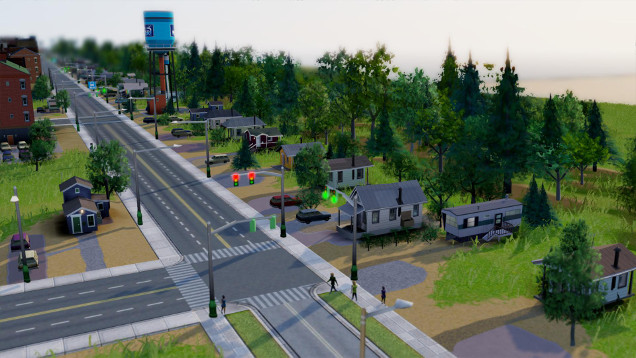
Tom Harper, the Curator of Antiquarian Mapping at the British Library told me last year that SimCity will go down as one of the great maps of the 20th century. “It has fashioned the world view — through maps, 3D perspective views, information expressed geographically — of a whole generation of Europeans and North Americans,” he said. “The video game environment may have reflected much of their makers but subjectiveness is to be expected with the creation of any virtual world… The player begins with a blank canvas: some grassy ground, some trees and a river on which to develop a city from scratch. Now, one might suppose from the idea of creating a city from scratch, the grid pattern development, or even the idea of undeveloped land as somehow a blank canvas, that the maker of the game was American in origin.”
Open the map of the Maxis classic city simulation Simcity 2000, and it’s flat new virgin land painted in a pleasing barley colour. It’s instilled with a New World colonialist optimism: the idea that the land you have just discovered does not ‘belong’ to anyone, that you are discovering it pure and uninhabited and ripe for building on, though in history English colonials preferred to shoot natives instead of disabusing this fantasy.
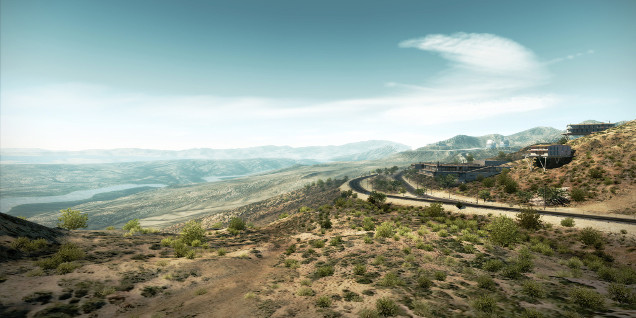
Nothing in SimCity happens without roads, and as you drag and drop long rectangles of residential, industrial or commercial zoning you come to realise that the little simpeople will build three squares from a road. The system reveals itself: you build in blocks of six thickness, surrounded by roads that are one block thick themselves, the same size as a house. You begin to build in large rectangular blocks, constructing efficient grids to min-max your land. Before long you can have a little Manhattan island, complete with traffic that never seems to die down. Little blue cars that drive endlessly in circles.
The most recent Simcity incarnation, the one that was beset by ‘always online’ controversies, invested even more in roads: population density is affected by the upgrading of roads. But the min-maxing strategy hasn’t changed: the American grid system is still alive and well in the world’s most famous city simulation. Roads have perhaps become even more important in this version despite the real world worry: that an over-dependence on expensive middle-eastern gasoline is threatening the US economy.
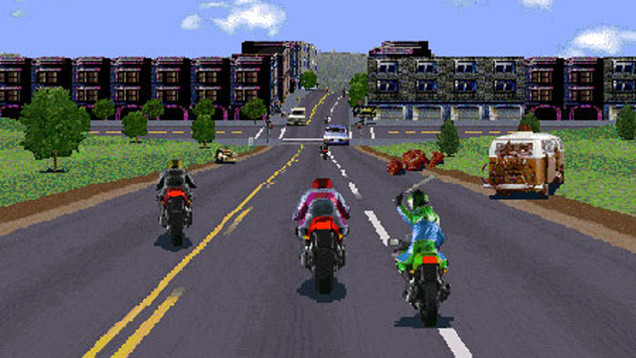
All this seems alien when I think of my upbringing on the east coast of Scotland, a place where nothing was done in grids and everything was arbitrated by buses that negotiated potholed winding roads, thick forested countryside where deer would jump out at you, or the curving roads around hills and granite architecture. Catching the bus into the city centre or out into the country was more accessible than learning to drive, and so a childhood playing Simcity 2000 didn’t teach me much about my own existence – at that point I didn’t even know what a City Hall was.
But Age of Empires: that series helped contextualise what I was seeing when I volunteered in museums, went to France or Germany on family holidays to see the ruins of Roman amphitheatres, or saw ruined castles in the Aberdeenshire countryside. Hours playing Age of Empires I and II suggested how buildings came to be ruined or abandoned (usually fire), that life in Europe is about the negotiation of difficult land and tribe politics, that as civilisation advances past mistakes are absorbed into the land, becoming something you later have to build around. The main unit of action in Age of Empires was people on foot, gathering resources or forming regiments. Maps would often open with your small encampment precariously close to another ancient civilisation’s fully-developed walls and resources, their presence encroaching on you slowly.
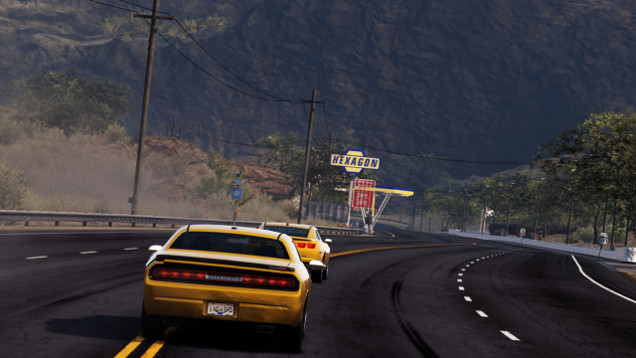
No wonder roads in Europe are not the grids of Simcity, young me thought, looking at the mess of the ancient map simulating war on my screen. There is no room for the US idea of ‘freedom’ in close quarters. Build a road and it’s an invitation for an argument.
A friend in California once told me that any teenager stuck in a midwest US backwater learns to drive as soon as they can; pulling out onto a road for that first time you understand that this car is now your escape and the road is your accomplice. When you need space in the US you go for a drive. Perhaps this is partly because when there’s anywhere to go in the US, it’s far away. US culture is centralised in malls where hours can be wasted in consumerism as entertainment, rather than the feeble local outposts dotted around that British shops have always been.
For teuchter (countryside) teenagers where I come from in Scotland our ragged rain-beaten heather-purple wildernesses seem just as forbidding as deserts, but the roads are narrow, winding, nauseating, and there are no convenience stores open past 11pm in the murk of Scottish countryside. In the US, drivers are catered to with all night 7/11 Slurpees. In the arse of Scotland you’re lucky if you get a box of chips after midnight to eat by the dark lapping shore of the North Sea.
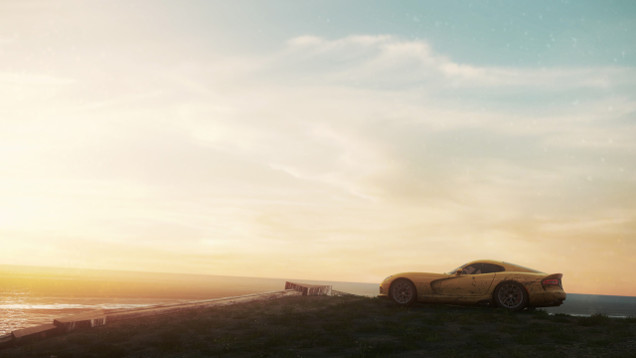
But the USA and Scotland have one fantasy road that connects them together; one that gives Scotland back the wider camber it deserves, one that gives the USA the drive it knows and worships, the drive into crimson Full Throttle sunsets. It is the virtual highway of the Scottish-made Grand Theft Auto series, the sort of crooked-drawn love letter only outsiders could construct.
As much as the GTA series has aged into a delinquent that outstays its welcome at parties, it’s the old boyfriend who always knew how to get you off in the back seat. The one that told off-colour jokes but had a firm hand on the wheel. It always conveyed the teenage thrill of freedom, peeling out onto a too-broad American road and going as fast as you can, the pop music loud in your ears. As you drive across the San Andreas landscape past something that looks like Edinburgh’s Forth Rail Bridge, you could almost mistake that vista for Oakland, California.
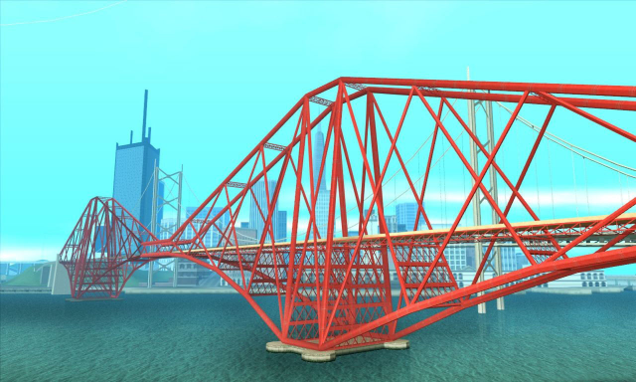
Incorrigibly Scottish games journalist Cara Ellison is currently travelling the USA, staying with developers and writing about them for her Embed With article series. She sent us this missive from her travels, a love letter to the American road and its role in game design.

Pictures: Dead End Thrills‘ gorgeous video game photography, Andy Kelly’s immense screenshot archive, and Cara’s own.
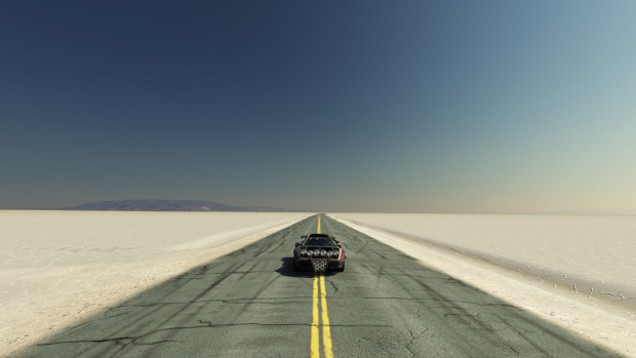
Comments
8 responses to “American Roads And Game Design: A Love Letter”
Full Throttle? Whoa blast from the past :-O
Australia is well known for our roads as well…, At 16 we quickly have to learn how to safely drive at 110kmph on a road with 10cms of room before your offroad… Oh and dont forget the ‘road train’ semi trailer coming head on, hanging three feet on your side of the road as it takes a corner >_>
Hey, shoulders are for pussies
You’re not supposed to experience learning to drive at 110km/h until you’re 20 in NSW. Learner license until at least 17. 12 months on P1 at max 90km/h then 24 months on P2 at max 100km/h.
Yeah but we’re are taught how to go 110 as part of our on road test…. At least, here in SA. But you are right, can’t go 110 solo until much later.
Ha, it’s different here. It’s illegal to go those speeds even with an instructor.
Hey @dannyallen and @adamcrampton! Reply to this so we can test.
OK. Come at me bro